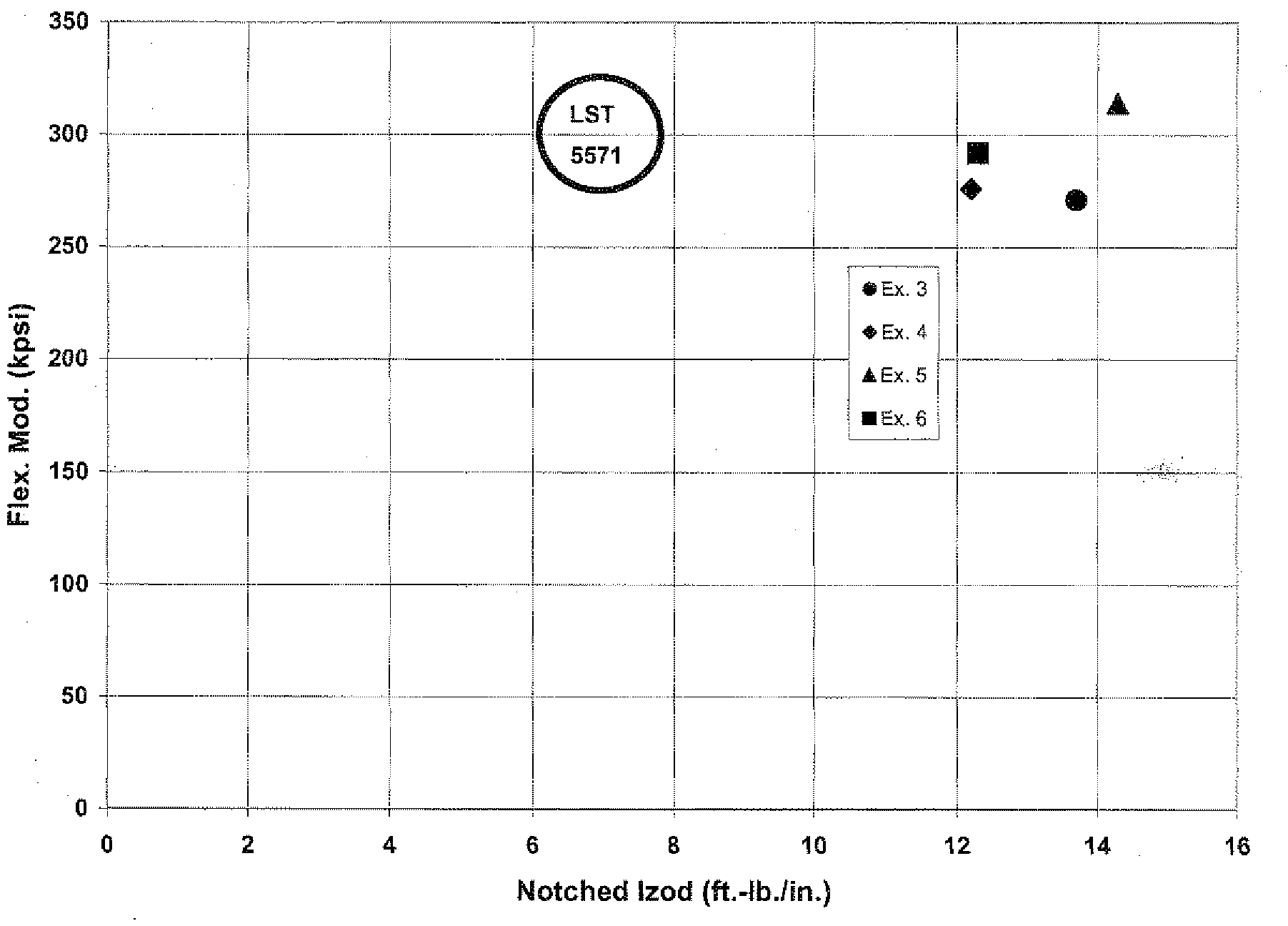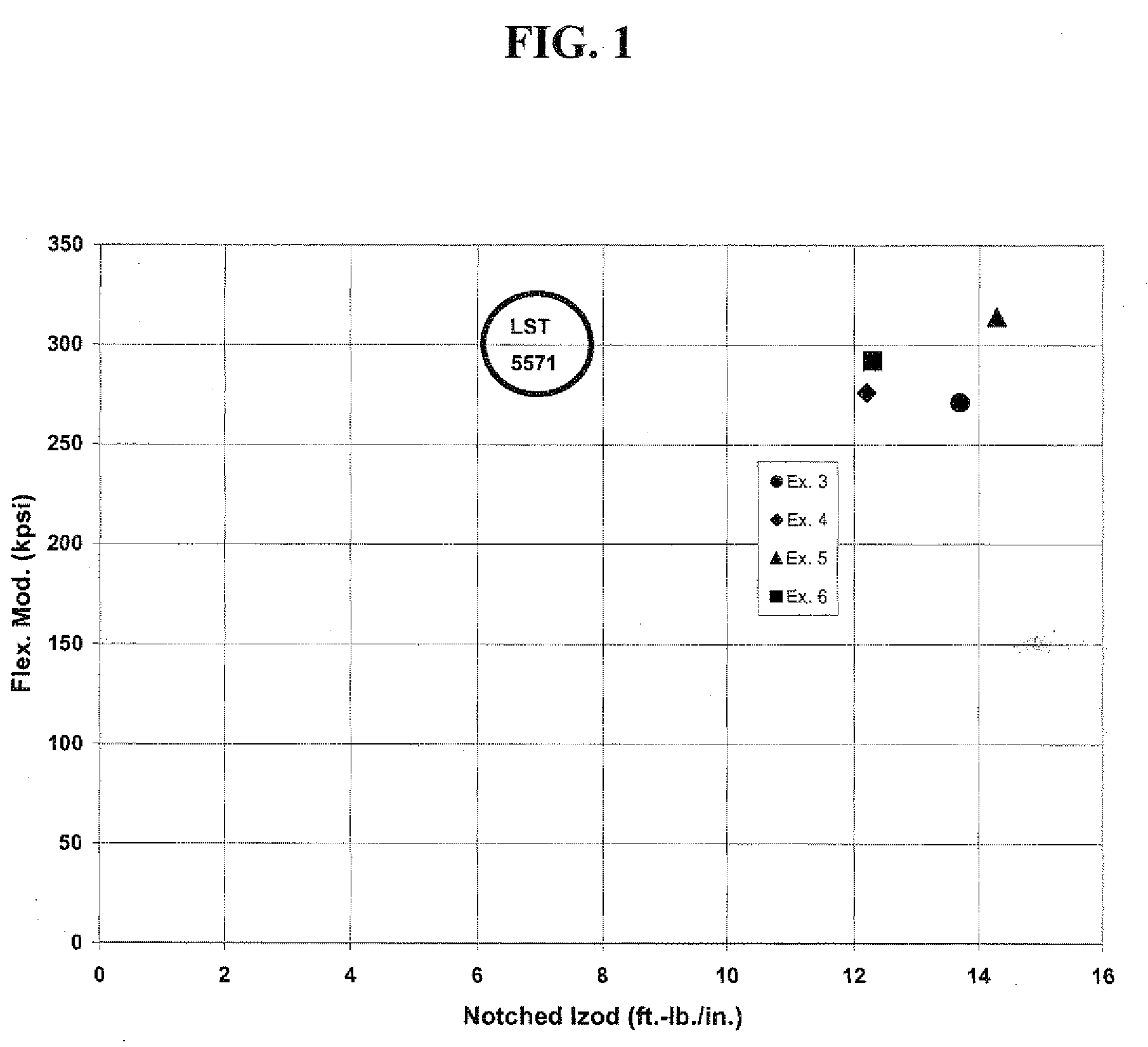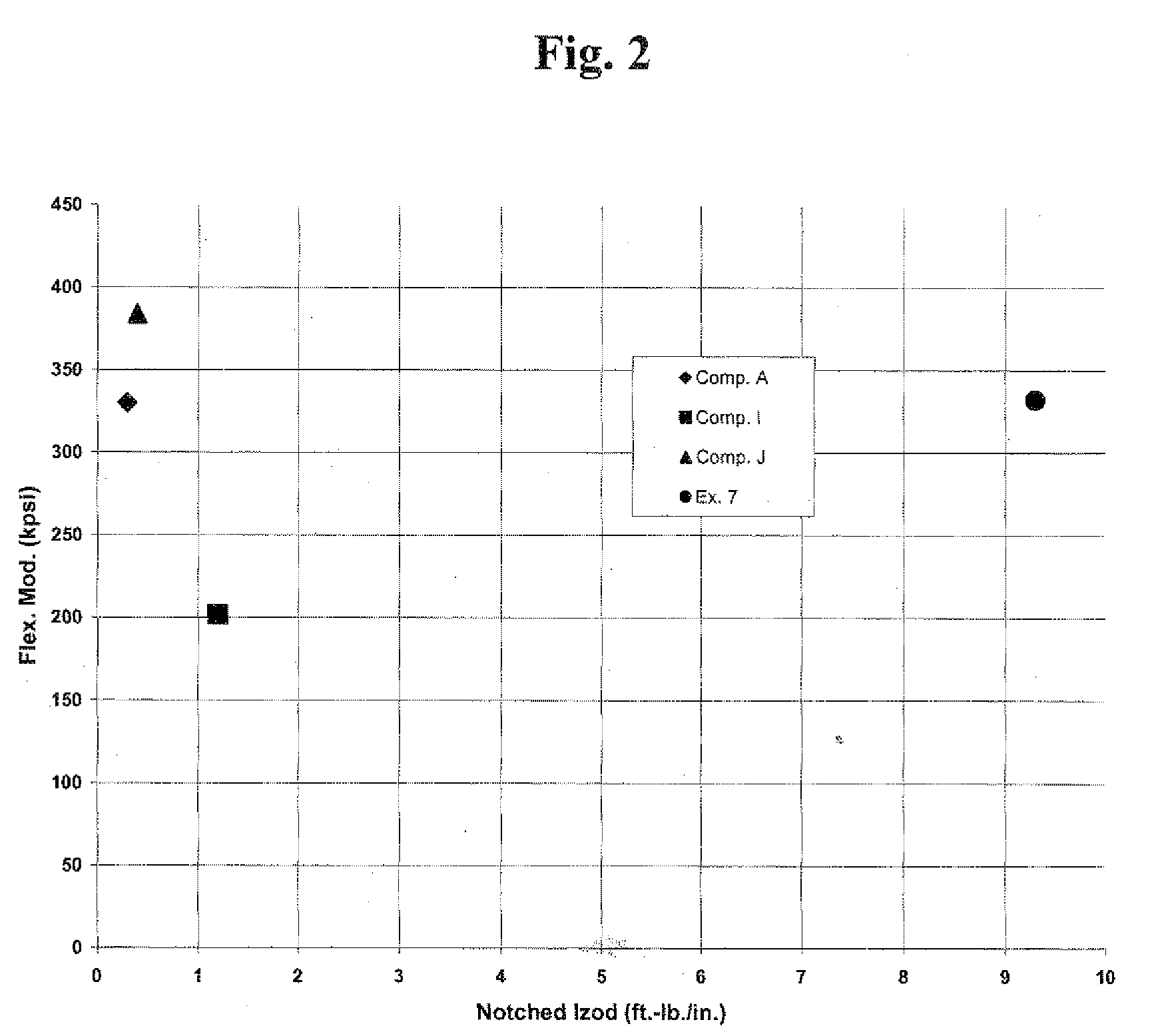Nucleated polypropylene nanocomposites
- Summary
- Abstract
- Description
- Claims
- Application Information
AI Technical Summary
Benefits of technology
Problems solved by technology
Method used
Image
Examples
examples
[0060]Table 4 shows concentrate formulations A-D.
TABLE 4Concentrate Formulations (Wt. Percent)ABCDProfax 6323 PP (Basell)19Innovene H35Z-02 nuc-PP (Innovene)*301918I44P clay (Nanocor)40404040PB5104 maleated PP (Chemtura)30404040Maxsperse dispersion agent (Chemax)1B-225 stabilizer (Ciba Chemicals)111*Recently changed brand names: Previously called Accpro 9934 resin
[0061]Table 5 shows the dilution or “let-down” of Concentrate A to into various combinations of nuc-PP, and two different types of polyolefin elastomer.
TABLE 5Compound Formulations (Wt. Percent)CompCompCompCompCompCompABCDEF12Conc. A0100101003030Innovene10072.582.59072.582.55050H35Z-02nuc-PP(Innovene)EG-8150017.517.500000Elastomer(DuPontElastomers)EG-8180000017.517.52020Elastomer(DuPontElastomers)
[0062]All concentrates A-D were made on a 27 mm Leistritz co-rotating twin screw extruder made by American Leistritz Extruder Corp. of Somerville, N.J., USA. All ingredients were added at the throat. The feeder rate was 15 pound pe...
PUM
| Property | Measurement | Unit |
|---|---|---|
| Temperature | aaaaa | aaaaa |
| Percent by mass | aaaaa | aaaaa |
| Percent by mass | aaaaa | aaaaa |
Abstract
Description
Claims
Application Information
 Login to View More
Login to View More - R&D
- Intellectual Property
- Life Sciences
- Materials
- Tech Scout
- Unparalleled Data Quality
- Higher Quality Content
- 60% Fewer Hallucinations
Browse by: Latest US Patents, China's latest patents, Technical Efficacy Thesaurus, Application Domain, Technology Topic, Popular Technical Reports.
© 2025 PatSnap. All rights reserved.Legal|Privacy policy|Modern Slavery Act Transparency Statement|Sitemap|About US| Contact US: help@patsnap.com



